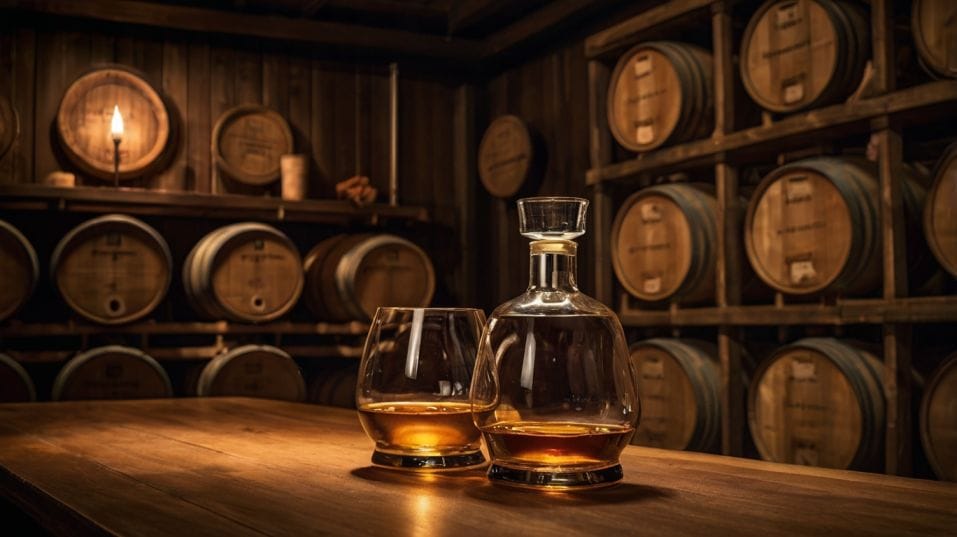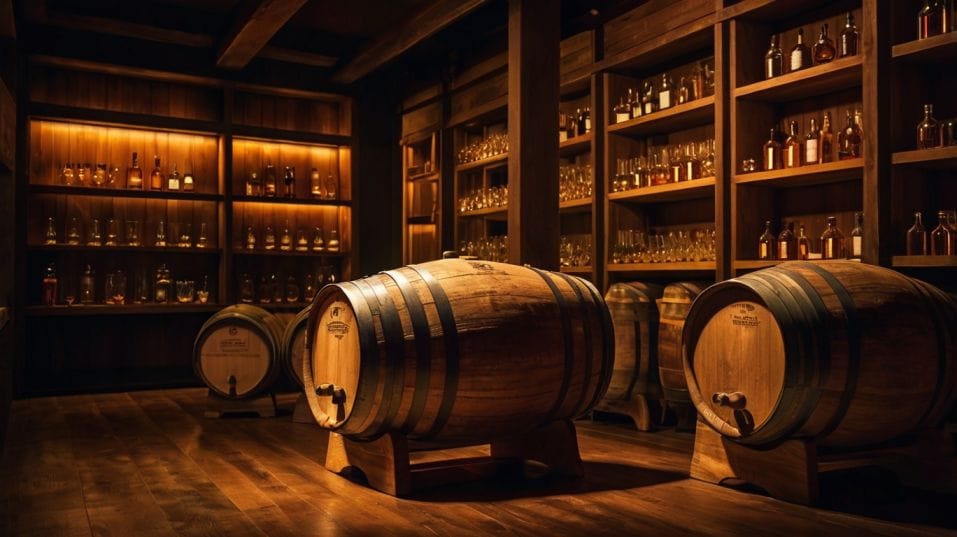Why You Should Never Swirl Whiskey Like Wine
Stop swirling your whiskey—start tasting it right. Learn why stillness reveals flavor and how to build your palate like a true connoisseur.

Ever swirl your whiskey like wine, hoping to unlock hidden flavors? Don’t. That move might look refined, but it’s doing more harm than good.
Whiskey plays by different rules—high-proof, tightly layered, and aromatically dense. Swirling just kicks up alcohol burn, drowning the subtle notes you actually want to taste.
If you’re early in your whiskey journey, skipping the swirl isn’t just a tip—it’s a shortcut to drinking smarter and savoring more with every glass.
Understanding the Whiskey-Wine Divide
Wine needs air to open up. It evolves rapidly with exposure to oxygen. Swirling releases subtle esters, teases out hidden fruit, softens acidity. It's part of the ritual. Whiskey doesn’t play that way.
Whiskey comes out swinging. It’s high-proof. Potent. Aromatically dense. The first few seconds after a pour are where the alcohol sits loudest. Swirling it only amplifies that.
Instead of teasing out flavor, you're blasting volatile ethanol compounds straight into your face—and over your palate if you’re sipping immediately afterward. You don’t get more complexity. You get more burn. And that burn drowns nuance.

How Aroma Works in Whiskey
The nose is where serious whiskey appreciation starts. What you smell sets the stage for what you’ll taste. But whiskey’s aromatic compounds are tightly layered.
Some of them release immediately. Others need a bit of time and stillness to emerge. Shaking the liquid up does the opposite of what you want. It disturbs the balance.
Here’s what works better: pour your whiskey into a proper nosing glass—something tulip-shaped, like a Glencairn. Give it a moment to settle.
Bring the glass to your nose slowly, keeping your mouth slightly open to soften the alcohol hit. Then move the glass beneath each nostril. You’ll notice different layers—fruit, spice, wood, smoke—depending on your angle and distance.
This isn’t about flair. It’s about calibration. You’re training your palate. You’re listening, not performing.
Real Technique, Not Theater
Swirling is visual. It’s dramatic. But whiskey tasting isn’t theater—it’s craftsmanship. Real technique looks quiet from the outside.
There’s intention behind every movement: how the whiskey is poured, how it rests, how it’s approached.
Take the people who work in distilleries. The blenders. The warehouse managers. The old-guard collectors who’ve been tasting for decades.
You won’t catch them swirling. Not because they’re trying to look cool, but because they’ve learned what works. They’re patient. They trust the process.
When you see a master distiller nose a glass, they’re not rushing it. They’re reading the whiskey. Measuring it against memory, method, and instinct. That kind of experience doesn’t come from swirling. It comes from slowing down.
The Glass Matters—But the Motion Matters More
A lot of beginners get fixated on glassware. And to be fair, it matters. A good glass concentrates aroma and helps direct it to your nose. But no glass can compensate for bad technique.
The real key? Stillness.
Letting the whiskey breathe on its own. A well-designed glass does its job best when you give it time and space. You don’t need to agitate it. You need to trust it.
If you absolutely want to release more aroma, there are smarter ways to do it. Warm the glass slightly with your hands.
Let the whiskey coat the inside by gently rolling it—not swirling—just enough to wet the sides. That’s not for oxygen. That’s for surface area. More surface means more scent. But even then, less is more. You’re coaxing, not waking the dead.
Respect the Age, Respect the Work
Whether you’re sipping a 4-year bourbon or a 21-year single malt, it’s worth remembering how much effort went into the bottle. Grain selection. Fermentation.
Distillation. Years of barrel aging. Constant sampling and adjustment to get the profile right. Every decision made so that the liquid could speak clearly. Swirling just shouts over that story.
There’s a reason traditional whiskey cultures—from Islay to Kyoto—focus on stillness and silence. It’s not just ritual. It’s a show of respect. Whiskey isn’t meant to be whipped into shape. It’s meant to be revealed.
For Collectors and Casual Sippers Alike
This isn’t just about snobbery or ceremony. It’s about access. The more carefully you taste, the more you'll understand what you're collecting—and what you're paying for.
When you stop swirling and start noticing, you’ll catch things you used to miss. A honey note under the char. A wisp of dried herbs in a rye.
The way a sherry finish hits differently after five minutes in the glass. These details help you choose smarter bottles, pair better food, and tell more interesting stories.
Tasting whiskey with intention is how you build your palate. It’s how you build confidence. And over time, it’s how you build a collection with substance instead of hype.
Final Thoughts
Swirling whiskey might look sophisticated, but it undercuts the experience. It clouds your nose, overwhelms your palate, and mutes the very flavors you’re trying to enjoy. Wine needs air. Whiskey needs time. That’s the difference.
Next time you pour a glass, skip the swirl. Let it sit. Let it speak. Smell slowly. Taste purposefully. Start paying attention to the small shifts, the quiet details, the flavor hiding just beneath the surface.
If you want to get better at whiskey, start today—with one pour, one moment, and no swirling.




